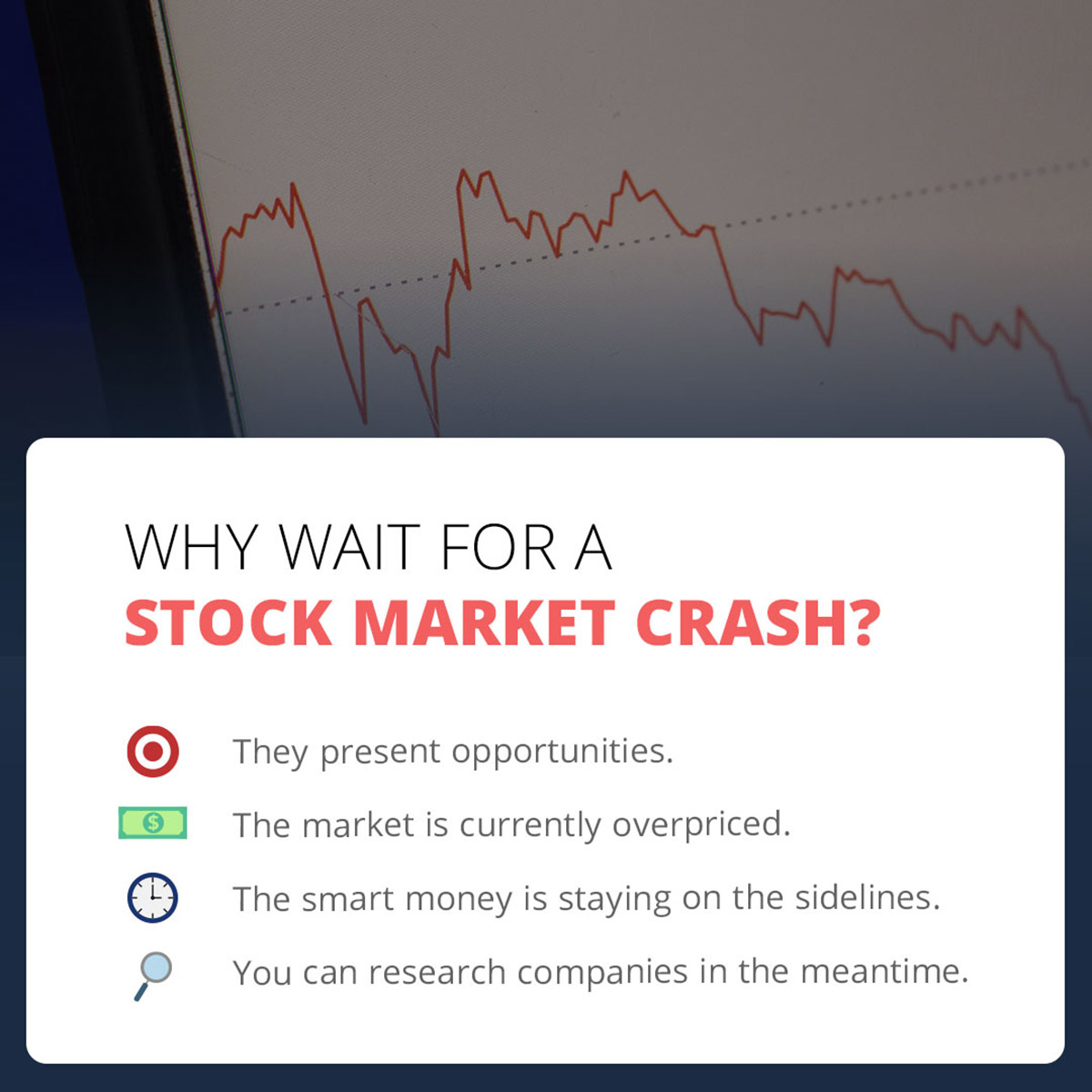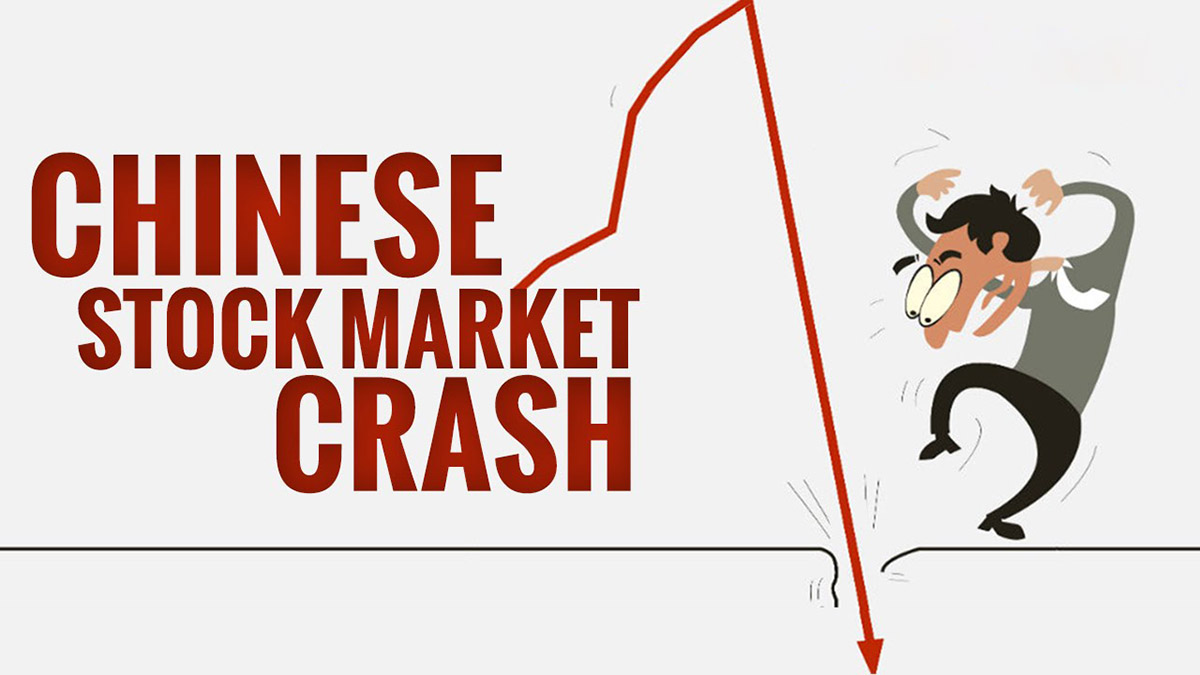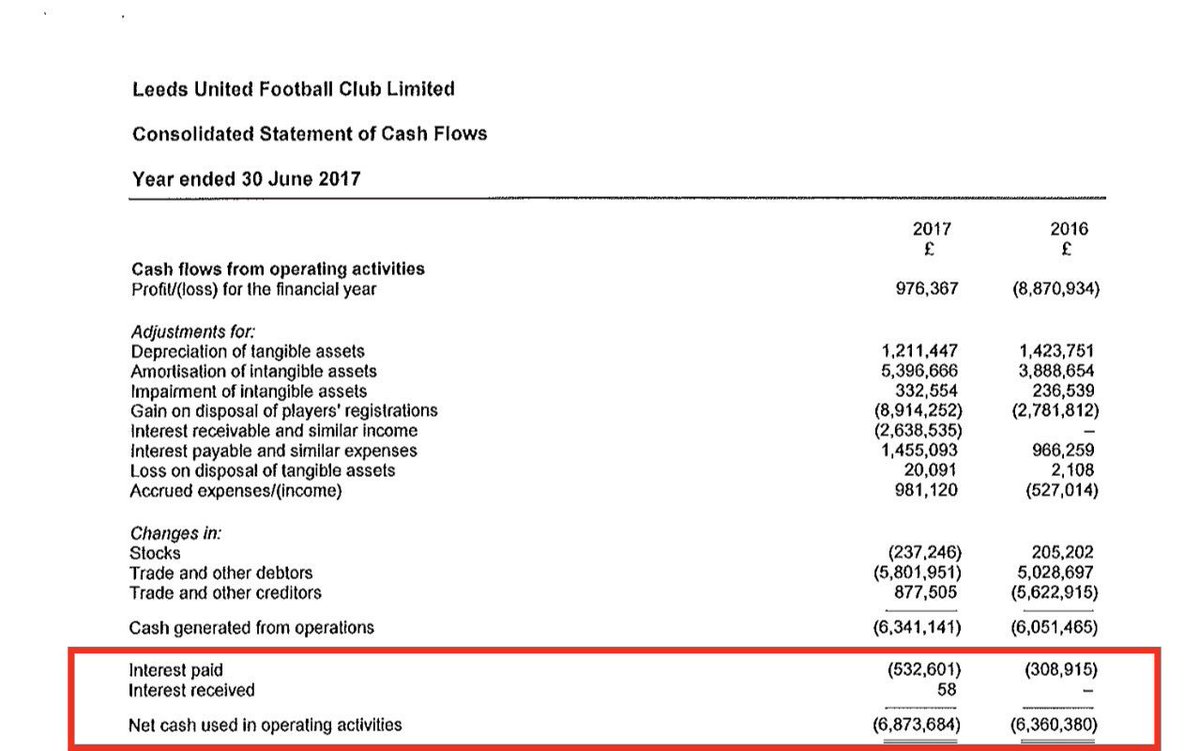Home>Finance>What Happens To The Money When The Stock Market Crash?


Finance
What Happens To The Money When The Stock Market Crash?
Published: November 24, 2023
Find out what happens to the money when the stock market crashes and how it affects your finances. Gain insights into managing your investments during market downturns.
(Many of the links in this article redirect to a specific reviewed product. Your purchase of these products through affiliate links helps to generate commission for LiveWell, at no extra cost. Learn more)
Table of Contents
Introduction
The stock market is a dynamic and ever-changing landscape that can experience periods of tremendous growth and equally unpredictable downturns. When a stock market crash occurs, investors often find themselves facing significant losses, and the question of what happens to the money becomes paramount.
A stock market crash typically refers to a sudden and substantial decline in stock prices, resulting in a significant loss of value for investors. This can be triggered by a variety of factors, such as economic instability, geopolitical events, or even unforeseen shocks to the financial system. Regardless of the cause, a stock market crash can have far-reaching implications not only for individual investors but also for the broader economy.
Understanding what happens to the money when the stock market crashes requires a closer look at the mechanics of the market. In essence, the money invested in stocks does not simply disappear; rather, it undergoes a process of wealth redistribution.
During a stock market crash, the value of stocks can plummet, leading to a loss of market capitalization. This means that the overall worth of companies listed on the stock market decreases significantly. Investors who own these stocks will experience a decline in the value of their holdings, resulting in paper losses.
The money invested in these stocks doesn’t disappear entirely, but rather, it is transferred from those who sold their shares at a higher price to those who bought them at a lower price. In other words, the money essentially changes hands, as investors who sell their shares during a crash incur losses, while those who buy stocks at lower prices potentially stand to gain in the long run.
While the immediate impact of a stock market crash can be unsettling for individual investors, it is essential to recognize that the stock market is a cyclical and resilient institution. Historically, the market has shown a remarkable ability to recover from crashes and even reach new heights. However, it is crucial to note that the length and severity of the recovery period can vary significantly with each crash.
In the subsequent sections of this article, we will delve deeper into the specifics of what happens to the money during a stock market crash, how it impacts investors, the wider economy, and financial institutions, as well as exploring historical examples and strategies for weathering such a downturn.
Understanding the Stock Market Crash
A stock market crash is a rapid and significant decline in the prices of stocks, leading to widespread panic and selling by investors. This sudden drop in stock prices can be triggered by a variety of factors, including economic downturns, geopolitical events, or even investor sentiment. Understanding the dynamics and triggers of a stock market crash is essential for investors and policymakers alike.
One of the key characteristics of a stock market crash is its unpredictability. While there may be warning signs or indicators of an impending crash, the exact timing and magnitude are often difficult to predict. This can lead to a domino effect, as panic selling by some investors can trigger further price declines, creating a self-reinforcing cycle of selling.
A crash typically occurs when there is a significant disconnect between the value of stocks and the fundamental factors that drive the market. This disconnect can be caused by factors such as overvaluation, speculative bubbles, or external shocks to the economy. For example, during the dot-com bubble in the late 1990s, many technology companies were trading at exorbitant valuations that were not supported by their earnings or market fundamentals. The eventual bursting of this bubble led to a sharp decline in stock prices.
Another factor that can contribute to a stock market crash is investor sentiment and psychological factors. Fear and panic can quickly spread among investors, leading to mass selling and a rapid decline in stock prices. Market psychology plays a vital role in determining the direction of the market, as investors’ perceptions of risk and reward drive their buying and selling decisions.
It is important to note that a stock market crash is different from a market correction. A market correction is a temporary decline in stock prices that typically represents a healthy correction to excessive market gains. In contrast, a crash is a more severe and prolonged downturn that often has a more significant impact on investor confidence and the overall economy.
The aftermath of a stock market crash can be characterized by increased volatility, reduced liquidity, and a decline in investor confidence. This can have a cascading effect on other sectors of the economy, as businesses may cut back on investments and consumers may reduce their spending due to financial uncertainty.
Understanding the underlying causes and dynamics of a stock market crash is crucial for investors to make well-informed decisions and manage their risk effectively. It also provides policymakers with valuable insights into potential measures and interventions that can help stabilize the market and mitigate the adverse effects of a crash.
Where Does the Money Go?
During a stock market crash, the value of stocks can plummet, and investors may wonder where their money goes. Contrary to popular belief, the money invested in stocks does not evaporate or disappear. It undergoes a process of wealth redistribution, as it changes hands from sellers to buyers in the market.
When stock prices decline during a crash, investors who sell their shares at lower prices than they initially purchased them incur losses. The money they receive from selling their stocks is now in the possession of those who purchased the shares at the lower prices. In essence, the money is transferred from one group of investors to another.
For example, let’s say Investor A bought 100 shares of a company’s stock at $50 per share, totaling an investment of $5,000. During a stock market crash, the value of the stock drops to $30 per share. If Investor A decides to sell their shares at this point, they will receive $3,000 for their investment, incurring a loss of $2,000. The $2,000 is then transferred to the investor who bought these shares from Investor A.
This wealth redistribution process highlights the importance of timing and strategy in the stock market. Investors who have the foresight to buy stocks at lower prices during a crash can benefit in the long run as the market eventually recovers. They have effectively purchased stocks at a discount, positioning themselves for potential gains as the market rebounds.
It is important to remember that the value of stocks is determined by market forces of supply and demand. When there is an imbalance between buyers and sellers during a crash, the market adjusts prices to reach equilibrium. This adjustment reflects the changing perceptions of investors regarding the value of the stocks.
While the money invested in stocks is being transferred between investors, it does not impact the overall supply of money in the economy. The money remains in circulation, albeit in different hands. However, the decline in stock prices during a crash can have broader implications for the economy as a whole.
In the next sections, we will explore the impacts of a stock market crash on investors, the economy, and financial institutions, providing a comprehensive understanding of the far-reaching consequences of such events.
Impact on Investors
A stock market crash can have a significant impact on individual investors, both emotionally and financially. When stock prices plummet, investors may experience a range of emotions, including fear, panic, and uncertainty. These emotional reactions can lead to impulsive decision-making, such as selling stocks at a loss or trying to time the market.
Financially, a stock market crash can result in substantial losses for investors. If they have invested a significant portion of their portfolio in stocks, the decline in stock prices can erode their wealth and potentially jeopardize their financial goals. The extent of the impact on investors’ portfolios depends on several factors, including their asset allocation, diversification, and risk tolerance.
Investors who have a well-diversified portfolio that includes different asset classes, such as bonds, real estate, and cash, may be better positioned to weather a stock market crash. Diversification can help mitigate the impact of a decline in stock prices by spreading the risk across different investments. However, even with diversification, it is challenging to completely shield oneself from the effects of a severe market downturn.
One of the critical challenges during a stock market crash is managing emotions. Fear and panic can lead to hasty decisions, such as selling stocks at the bottom of the market or abandoning the stock market altogether. However, succumbing to such emotions can result in locking in losses and missing out on potential future gains when the market recovers.
It is important for investors to maintain a long-term perspective and stick to their investment strategies during a stock market crash. History has shown that the market tends to recover over time, and selling during a downturn can lock in losses and hinder the ability to benefit from future market rebounds.
While a stock market crash can be a challenging and stressful time for investors, it also presents opportunities for those who are prepared. Investors with cash on hand or holding stable investments may be able to take advantage of lower stock prices by buying quality stocks at discounted prices.
Moreover, a stock market crash can serve as a valuable lesson in risk management and the importance of diversification. It highlights the need for investors to regularly review and rebalance their portfolios to ensure they are aligned with their financial goals and risk tolerance.
In summary, the impact of a stock market crash on investors can be both emotional and financial. It is crucial for investors to stay disciplined and focused on their long-term investment strategies, rather than making reactionary decisions based on short-term market fluctuations. By maintaining a diversified portfolio and managing emotions effectively, investors can navigate through a stock market crash and position themselves for potential future growth.
Implications for the Economy
A stock market crash can have far-reaching implications for the broader economy beyond the immediate impact on individual investors. The stock market serves as a barometer of economic health and investor confidence, and a severe decline in stock prices can reverberate throughout the economy.
One of the primary implications of a stock market crash is reduced consumer and business confidence. When stock prices plummet, consumers may feel less secure about their financial well-being and may cut back on spending. This can have a negative impact on businesses, leading to decreased sales and potential layoffs. Reduced consumer spending can also contribute to a slowdown in economic growth.
Businesses may also be affected by a stock market crash through reduced access to capital. When the market experiences a downturn, it becomes more challenging for companies to raise funds through issuing stocks. This can limit their ability to finance expansion plans or invest in research and development, which can have long-term implications for innovation and economic growth.
Another implication of a stock market crash is the potential for a decline in the value of pension funds and retirement accounts. Many individuals rely on their retirement savings invested in stocks and other assets to fund their post-work lives. When stock prices decline, the value of these portfolios can shrink, potentially impacting retirement plans and the overall financial security of individuals.
Furthermore, a stock market crash can have an impact on investor sentiment and risk appetite. If investors experience significant losses during a crash, they may become more risk-averse in the future, leading to reduced investments in the stock market and potentially limiting capital available for businesses.
The implications of a stock market crash for the economy can spill over into other sectors, such as the housing market. A decline in stock prices can undermine consumer confidence, leading to a slowdown in the real estate market as individuals become more cautious about making significant financial commitments, such as purchasing a home.
However, it is important to note that the implications of a stock market crash on the economy are not solely negative. A market correction can also create opportunities for economic growth and change. Lower stock prices can make companies more attractive to potential investors or acquisition targets, spurring investment and economic activity.
Government intervention and policies play a significant role in mitigating the impact of a stock market crash on the economy. Central banks may lower interest rates or implement expansionary monetary policies to stimulate economic activity and provide liquidity to financial markets. Governments may also introduce fiscal stimulus measures to boost spending and investment.
In summary, a stock market crash can have widespread implications for the economy, including reduced consumer and business confidence, limited access to capital for businesses, and potential declines in the value of retirement accounts. However, it is also important to recognize that economic repercussions can vary, and opportunities for growth and change can arise from market downturns.
Repercussions on Financial Institutions
A stock market crash can have significant repercussions on financial institutions, including banks, investment firms, and insurance companies. These institutions are interconnected with the stock market and can be greatly affected by the volatility and instability resulting from a crash.
One of the immediate consequences of a stock market crash is the potential for a decline in the value of financial institutions’ investment portfolios. Many financial institutions hold substantial investments in stocks and other market securities. When stock prices plummet, the value of these investments decreases, impacting the institutions’ balance sheets and overall financial health.
Financial institutions can experience losses not only in their own investment portfolios but also in assets they manage on behalf of their clients. Mutual funds, hedge funds, and pension funds managed by these institutions may suffer significant losses during a market crash, leading to a decrease in their asset under management (AUM) and potential reputational damage.
Additionally, a stock market crash can impact the liquidity of financial institutions. When there is a significant decline in the value of stocks, investors may demand their money back from mutual funds and other investment vehicles. This can strain the liquidity position of financial institutions, making it more challenging for them to meet withdrawal requests and potentially leading to solvency concerns.
Financial institutions also play a crucial role in providing financing and credit to businesses and individuals. During a stock market crash, the risk appetite of financial institutions may decrease, leading to a tightening of credit conditions. This can make it more difficult for businesses to access capital for investment and expansion, potentially slowing down economic activity.
Furthermore, a stock market crash can erode investor confidence in financial institutions, particularly if there is a perception that these institutions failed to adequately manage risk or engage in unethical practices. This loss of trust can have long-lasting implications, as it may result in customers moving their deposits and investments to alternative institutions or withdrawing altogether from the financial system.
Regulators and policymakers play key roles in mitigating the repercussions of a stock market crash on financial institutions. Central banks may provide liquidity support to help stabilize the banking system and prevent a liquidity crisis. Regulatory bodies may also introduce stricter oversight and risk management requirements to enhance the stability and resilience of financial institutions.
In summary, a stock market crash can have significant repercussions on financial institutions, including declines in investment portfolios, liquidity challenges, tightening credit conditions, and loss of investor confidence. Government intervention and regulatory measures are essential in minimizing the impact and maintaining the stability of the financial system.
Government Intervention and Policies
A stock market crash often prompts governments to implement intervention and policy measures to stabilize the financial system, restore investor confidence, and mitigate the impact on the economy. Governments have various tools at their disposal to address the repercussions of a crash and prevent further economic instability.
One of the key ways governments intervene during a stock market crash is through monetary policy. Central banks can lower interest rates to stimulate economic activity and provide liquidity to financial markets. By reducing borrowing costs, central banks aim to encourage businesses and individuals to invest and spend, thereby boosting economic growth.
In addition to lowering interest rates, central banks may also implement expansionary monetary policies, such as quantitative easing. This involves the purchase of government bonds and other financial assets, injecting liquidity into the markets and supporting the prices of these assets. These actions aim to provide stability and prevent further declines in asset values.
Another form of government intervention is the implementation of fiscal stimulus measures. Governments may increase government spending or cut taxes to stimulate economic growth and consumer demand. By injecting funds into the economy, governments aim to create jobs, support businesses, and boost overall economic activity. These measures can help restore investor confidence and mitigate the negative consequences of a stock market crash.
Regulatory bodies also play a crucial role in implementing policies to address the aftermath of a stock market crash. They may introduce stricter oversight and risk management regulations to ensure the stability and integrity of financial institutions. This can involve measures to enhance transparency, improve corporate governance, and prevent excessive risk-taking that could lead to future market downturns.
Additionally, governments may introduce measures to support specific sectors that are severely impacted by a stock market crash. For example, during the Global Financial Crisis in 2008, governments implemented bailout programs to rescue and stabilize failing financial institutions that were deemed “too big to fail.” These interventions aimed to prevent widespread financial collapse and restore confidence in the financial system.
Government intervention during a stock market crash is not without its challenges and controversies. There can be debates about the extent of intervention, the allocation of resources, and the long-term effects of these policies. Striking the right balance between providing support and avoiding moral hazard is a crucial consideration for policymakers.
Overall, government intervention and policies are crucial in navigating the aftermath of a stock market crash. By implementing measures that stabilize financial markets, restore investor confidence, and support economic growth, governments can help mitigate the impact of a crash and promote a quicker recovery.
Historical Examples of Money Redistribution
Stock market crashes throughout history have been characterized by significant wealth redistribution as money changes hands between investors. These historical examples highlight the impact of market downturns and the subsequent redistribution of wealth that occurs.
One notable example is the Great Depression, which began with the stock market crash of 1929. The crash led to a steep decline in stock prices, causing widespread financial hardship and economic turmoil. Many investors who had borrowed money to invest in stocks faced substantial losses and were unable to repay their loans. This resulted in bank failures and a contraction of credit, exacerbating the already dire economic conditions. The wealth that was lost during this period was effectively shifted from the investors who held stocks to the creditors who could not collect on their loans.
Another example is the financial crisis of 2008, triggered by the collapse of the subprime mortgage market in the United States. The crash led to a significant decline in stock prices and widespread losses for investors. Many financial institutions faced insolvency or were on the brink of collapse. Governments intervened with taxpayer-funded bailouts to prevent a complete collapse of the financial system. This resulted in a redistribution of wealth as taxpayer funds were used to restore stability and mitigate the losses faced by financial institutions.
During the dot-com bubble in the late 1990s, stocks in technology companies soared to unsustainable heights, driven by speculative fervor. When the bubble burst in the early 2000s, stock prices plummeted, and many investors experienced significant losses. Money shifted from those who had invested in overvalued tech stocks to those who had refrained from participating in the speculative frenzy.
These historical examples demonstrate that stock market crashes often lead to significant redistribution of wealth. The money invested in stocks doesn’t disappear, but rather, it changes hands as investors buy or sell at lower prices during the downturn. Ultimately, those who bought stocks at lower prices during a crash have the potential to see gains when the market eventually recovers.
It is important to note that the magnitude and duration of wealth redistribution during a stock market crash can vary significantly. Factors such as the severity of the crash, government intervention, and the overall strength of the economy play a role in determining the extent of wealth redistribution.
Understanding the historical examples of money redistribution during stock market crashes provides valuable insights into the cyclical nature of markets and the opportunities and risks that arise during these downturns. It underscores the importance of a long-term perspective, risk management, and strategic decision-making for investors in navigating the complex dynamics of the stock market.
Strategies for Weathering a Stock Market Crash
A stock market crash can be a challenging and uncertain time for investors. However, there are strategies that can help individuals weather the storm and mitigate the impact of a downturn on their portfolios. Here are some key strategies to consider:
1. Diversify Your Portfolio: Maintaining a well-diversified portfolio that includes a mix of asset classes, such as stocks, bonds, real estate, and cash, can help spread risk. Different assets tend to react differently to market conditions, so having a diversified portfolio can mitigate the impact of a stock market crash. Diversification helps ensure that losses incurred in one area of the portfolio may be offset by gains in another.
2. Maintain a Long-Term Perspective: Stock market crashes are often followed by recoveries and periods of growth. It is important to maintain a long-term perspective and resist the urge to make hasty decisions based on short-term market fluctuations. Trying to time the market by selling stocks during a crash and then buying back at the bottom can be challenging and risky. Staying invested and sticking to your long-term investment plan can help you benefit from the potential rebound of the market.
3. Regularly Review and Rebalance: Periodically reviewing and rebalancing your portfolio ensures that it remains aligned with your financial goals and risk tolerance. After a stock market crash, the asset allocation in your portfolio may have shifted due to changes in the value of different assets. Rebalancing involves buying or selling assets to restore the desired asset allocation. This disciplined approach helps maintain a well-diversified portfolio and can provide opportunities for buying assets at lower prices.
4. Focus on Quality Investments: During a stock market crash, it is essential to differentiate between investments with solid fundamentals and those that may be more vulnerable. Quality companies with strong balance sheets, consistent earnings, and a proven track record of performance tend to be more resilient during downturns. Focus on investing in quality stocks or funds that have a history of weathering market downturns.
5. Invest in Defensive Sectors: Certain sectors, such as consumer staples, healthcare, and utilities, tend to be more defensive and less susceptible to economic downturns. These sectors provide essential products and services that are in demand regardless of the state of the economy. Allocating a portion of your portfolio to defensive sectors can help mitigate the impact of a stock market crash.
6. Maintain Adequate Cash Reserves: Having cash reserves can provide a buffer during a stock market crash. It gives you the flexibility to take advantage of attractive investment opportunities that may arise during the downturn. Additionally, having cash on hand can help cover any unexpected expenses and provide a sense of financial security during uncertain times.
7. Keep Emotions in Check: Emotions can run high during a stock market crash, and fear can drive impulsive decision-making. It is crucial to keep emotions in check and avoid making rash decisions based on short-term market volatility. Investing based on sound research and maintaining a disciplined approach will help guard against emotional reactions that could harm your long-term financial goals.
Remember, every investor’s situation is unique, and it is essential to consider your own risk tolerance, investment goals, and time horizon when implementing these strategies. Consulting with a financial advisor can provide personalized guidance tailored to your specific circumstances.
By implementing these strategies, investors can position themselves to weather a stock market crash and potentially emerge stronger when the market recovers. Patience, discipline, and a long-term perspective are key to successfully navigating the ups and downs of the stock market.
Conclusion
A stock market crash is a challenging and tumultuous event that can have far-reaching consequences for investors, the economy, and financial institutions. Understanding what happens to the money when the stock market crashes is crucial for navigating through such downturns successfully.
During a crash, the money invested in stocks undergoes a process of wealth redistribution. It changes hands from sellers to buyers, as those who sell their shares at lower prices incur losses while those who buy at discounted prices potentially position themselves for future gains.
While a stock market crash can cause panic and uncertainty, it is important to maintain a long-term perspective. History has shown that markets have the ability to recover and reach new heights over time. By staying invested, diversifying portfolios, and maintaining a disciplined approach, investors can position themselves for potential market rebounds.
Stock market crashes also have implications for the broader economy. They can impact consumer and business confidence, access to capital, and overall economic growth. Government intervention and policy measures play a crucial role in stabilizing financial systems, restoring investor confidence, and mitigating the economic impact of a crash.
Financial institutions, such as banks and investment firms, can be significantly affected by stock market crashes. They may experience losses in investment portfolios, liquidity challenges, and altered risk appetite. Regulatory oversight and government support are essential in maintaining the stability and resilience of these institutions.
Ultimately, strategies for weathering a stock market crash involve diversification, maintaining a long-term perspective, regular portfolio reviews, investing in quality assets, and managing emotions. These strategies can help investors navigate through downturns and potentially benefit from future market recoveries.
In conclusion, stock market crashes are an inherent part of investing, and understanding their dynamics is crucial for investors and policymakers alike. By staying informed, adopting sound investment strategies, and remaining resilient during market downturns, individuals can position themselves for long-term financial success despite the occasional turbulence of the stock market.














